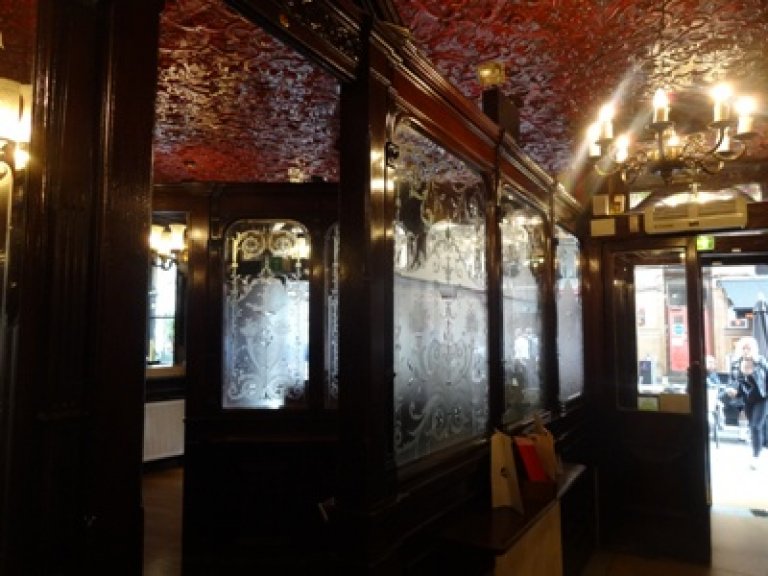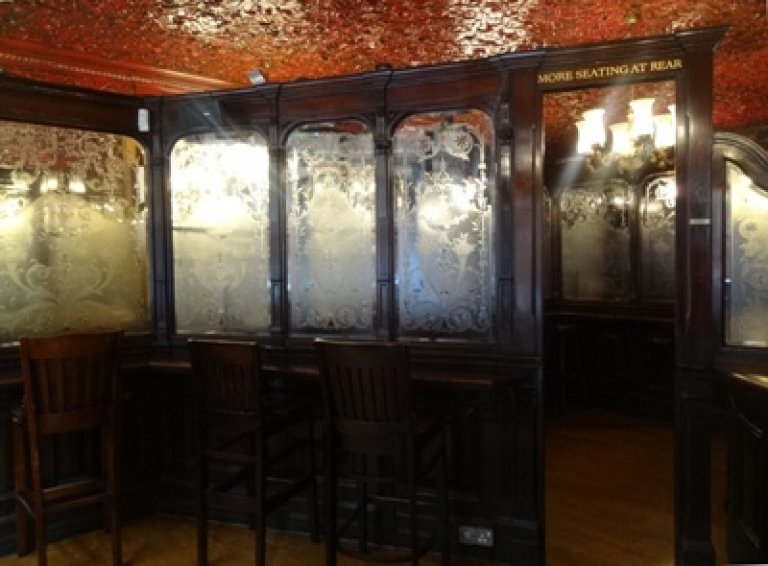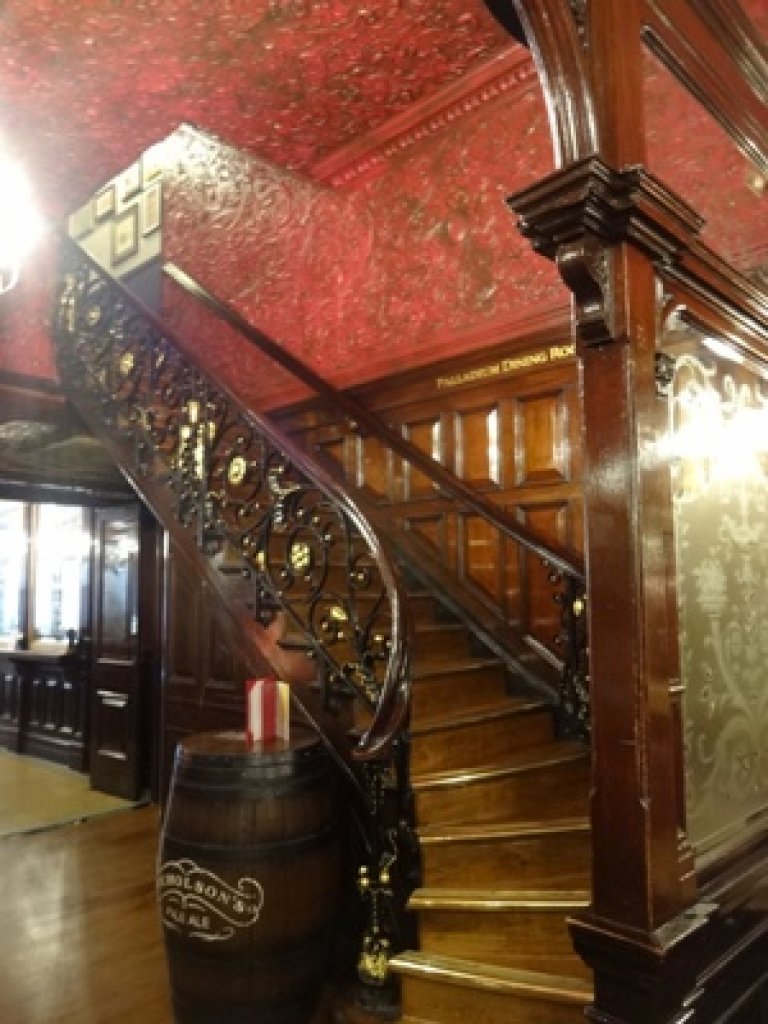Argyll Arms
18 Argyll StreetSoho
W1F 7TP
This pub is not only a grade II* listed building, it is also a Three Star pub on the Campaign for Real Ale’s (CAMRA) National Inventory with an interior of outstanding national historic importance, and the description is as follows:“ The Argyll is an astonishing survival and a welcome escape from frenetic Oxford Street with food and a good range of real ales available. It has one of the most important late Victorian interiors in London and, like the Prince Alfred, Maida Vale, W8 shows how pub proprietors and their clients liked small, cosy drinking spaces. Whereas the Prince Alfred has a peninsula-style servery with radiating screens, the Argyll has a long, straight servery and a series of screened-off drinking areas sandwiched between it and the corridor. The building dates from 1868 but the fittings are from an 1890s remodelling for the proprietor E. Bratt (architect probably Robert Sawyer). At the front there are two entrances, the right-hand one leading into a drinking area while on the left a corridor leads to the rear of the building. The mirrors on the left-hand wall enhance the sumptuous atmosphere with reflections of the screens and glass opposite and light from the lamps. At the back ‘Saloon and Dining Room’ cut into a high-level glass panel announce this as the smartest part of the pub where there is another glittering display of mirrors. A magnificently swirly iron stair rail leads to the (modernised) first floor. Other features to relish are the highly decorated ceiling (probably from 1868), an immensely deep, decorated cornice in the rear parts, an ornamented column in the back area, and a delightful little glazed-in office within the servery. History in the street: Argyll Street was laid out by John Campbell, 2nd Duke of Argyll, one of the Duke of Marlborough’s leading generals. It was in the heart of fashionable London and the Campbells built their London residence, Argyll House, on the opposite side of the road between 1735 and 1750. The London Palladium, by the great theatre architect Frank Matcham, was built in 1909-10.”
The listing description is as follows: “Public house. 1868, altered c.1895 by Robert Sawyer including refronting of ground floor and interior remodelling, and further minor C20 alteration. Brick, stuccoed to street frontage.. Roof concealed behind shallow parapet. PLAN. Narrow frontage incorporates deep side corridor plan leading to separate bars to right hand side and to rear, the servery on the right-hand side connecting the different areas. EXTERIOR. 5 storeys, 3 bays, with entrances to left and right flanked by red granite pilasters with larvikite bases and terminations.and with curved timber and glass frontage between. Windows to second, third and fourth floors flanked by flat pilasters and sub-Corinthian columns. Moulded imposts to the fifth floor window pilasters; over the fifth floor windows, tympana with vermiculated detail in the centre. Plain parapet. INTERIOR : Left side wall to corridor with mahogany panelling, pilasters and mirrors with etched and polished details of urns, cornucopias, swags and foliage. On right, similarly decorated glass in a screen delineating 3 separate drinking areas. Over the entrance to each is a broken pediment. Between these openings, similarly detailed screens, and a doorway in the screen between the 2 front bars. Contemporary bar counter with panelled and flat pilasters. Bar back altered in lower parts; one section canted forward with doors and etched and polished glass and with a clock over. Further towards the rear the bar back has a broad section with a segmental pediment and carved frieze. Large rear room with walling incorporating panelling and mirrors. Cased iron colums interrupt the bar counter at 2 points. Richly decorated Lincrusta ceiling throughout. Staircase to first floor with ornate, scrolled ironwork balustrade. Modestly decorated cast-iron balusters to staircase from first to second floor. A mid-C19, metropolitan mid-terrace public house, remodelled during the great public house boom at the turn of the century. The little altered plan form with its separate drinking areas and the associated high-quality wood and glass work is a remarkable and rare survival, thought to be the best surviving example of the plan type to retain its c.1900 fittings. Source: T. Bruning, Historic Pubs of London (London, 1998), 120.”
The WhatPub link is here: WhatPub/Argyll Arms
The Heritage Pub Group link is here: PHG/Argyll Arms
The Argyll Arms featured on the Evening Crawl of Soho in December 2004, and the Saints and Sinners: Evening Crawl of Covent Garden, Fitzrovia and Soho in April 2016.





